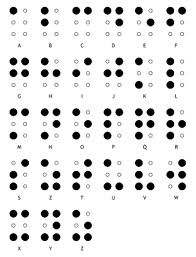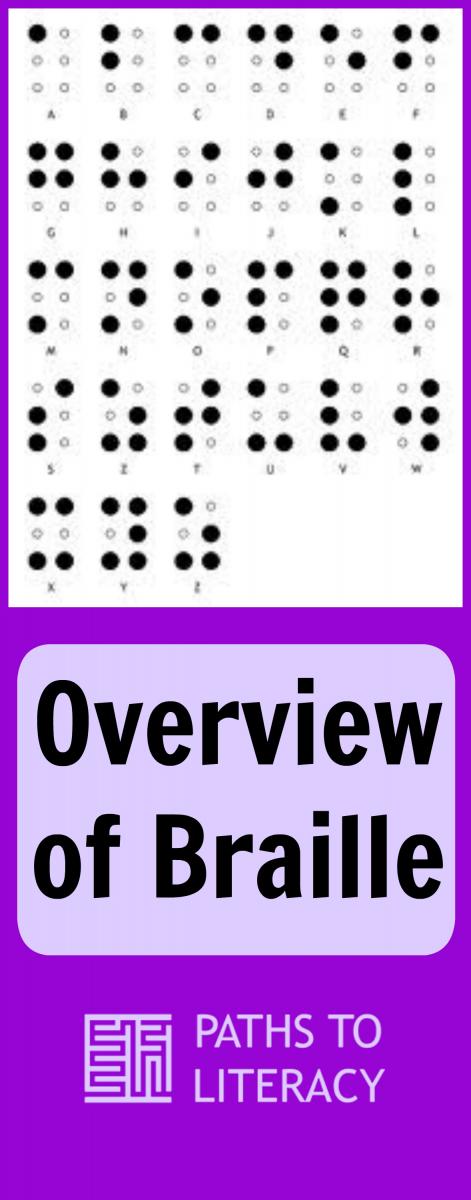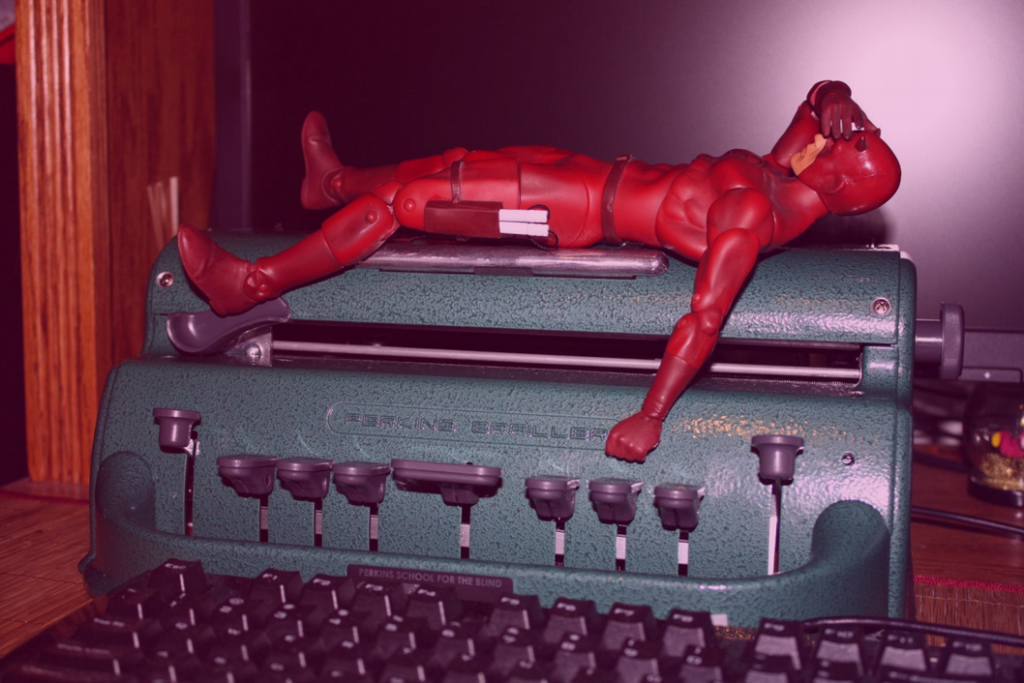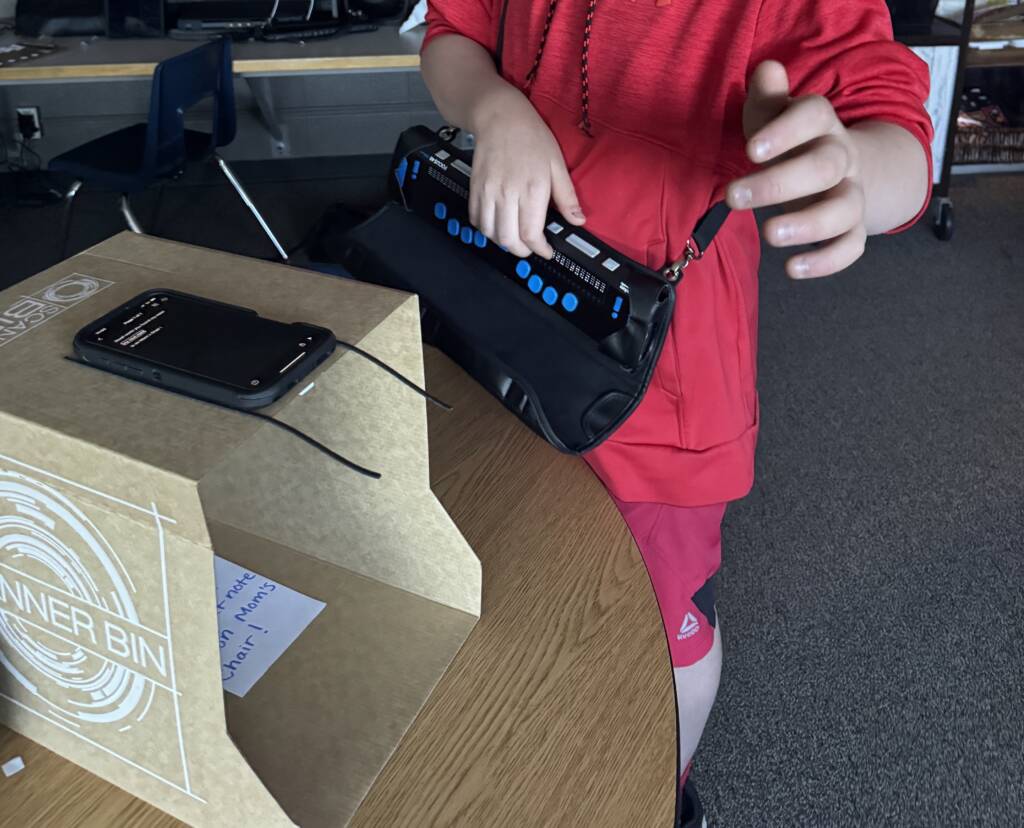What is braille?

Braille is a code used by people who are blind or visually impaired to read and write. It provides independent access to literacy for people with visual impairment and has been a key to expanding vocational options.
It is a tactile system through which letters and words are represented using raised dots, and it is not a separate language. In fact, there are different braille codes for different languages. Unified English Braille is a code used by English-speaking people throughout the world.
Braille uses sets of six dots, called cells, in various combinations to represent letters of the alphabet, punctuation, numbers, and whole words.
How was braille invented?
The braille code used today in the United States was invented by Louis Braille, while he was a student at the National Institute for Blind Youth in Paris, France in the 1820’s. Learn more about Louis Braille and the history of braille here.
Who teaches braille?
Teaching braille includes both knowledge of the braille code itself and knowledge of instructional strategies. In some states it is required that the braille teacher be certified, and personnel preparation programs include braille skills as part of the curriculum for training future teachers of students with visual impairments in order to meet CEC (Council for Exceptional Children) professional standards. Adults who are proficient braille readers themselves have the knowledge of the braille code and can be useful resources and good mentors. To become an accomplished braille reader, like other areas of literacy, takes consistent instruction and practice. Braille teachers should be aware of the growing literature on evidence-based strategies for braille instruction to ensure that students are able to apply the braille code in multiple educational applications.
Who should learn braille?
Decisions about what literacy medium is most appropriate for a student with visual impairment should be based on assessment. IDEA Sec. 300.324 (a) (2) (iii) requires evaluation of learning media to determine whether or not braille is the student’s appropriate medium. A learning medium assessment (LMA) is the tool used by VI professionals to guide decisions on literacy instruction. The LMA evaluation will gauge which specific visual, tactual, and/or auditory learning media will best meet the student’s needs. This evaluation should be updated frequently as literacy needs evolve.
Reading instruction encompasses reading and writing and listening. The format that each student uses can vary across these types of literacy uses, may change depending on the task, and will very likely change over time. Instruction in braille may be recommended when a student’s tactile sense is the most efficient and reliable to access information from the environment, and/or if they have a progressive condition that impacts future visual abilities. Students who have functional vision may rely upon braille in particular situations, or move to braille to avoid the visual fatigue caused by long visual tasks. Most students, even those for whom braille is the most efficient medium to access the written word, will also benefit from instruction in auditory strategies. Many for whom braille is the primary mode may use visual media for specific tasks or in certain situations as a secondary literacy tool. These students are often referred to as dual media learners.
In the past, students with intellectual impairments were often not evaluated for a literacy medium. Given the current emphasis on literacy as a lifelong pursuit, beginning at the earliest ages and ability levels, all children with visual impairment should have LMAs that evaluate their literacy media. Students who use their tactual sense for primary learning may benefit from instruction in braille. Braille can be useful on labels, simple calendars and other introductory literacy activities even if a student is not accessing formal literature.
Is braille becoming obsolete?
Braille is very much alive and well! Most braille readers will tell you that braille literacy has opened the door to independence for them, both at home and at work. While there are many ways to receive and share information using auditory and electronic methods, braille remains an essential tool to independence for those who are blind or unable to read print.
What is the difference between Grade 1 and Grade 2 braille?
Braille can be written using individual letters of the alphabet, and this is known as Grade 1 or uncontracted braille. It can also be written using contractions or Grade 2 braille. There is discussion in the field about the advantages of teaching contracted versus uncontracted braille. Learn more in the article Reading for Everyone: Expanding Literacy Options by Cyral Miller.
What kinds of braille codes are there in the United States?
- Unified English Braille (UEB)
- Nemeth Code (for science and math notation)
- Music Braille
- Foreign Languages
See BANA for more information on different codes.
Should the word “braille” be capitalized?
The Braille Authority of North America (BANA) has a specific position on this (adopted in 2006), which should clarify it for the field. Their position states:
“BANA recommends that the word ‘braille’, when referring to the code developed by Louis Braille, be written with an initial lowercase letter. When referring to the proper name of Louis Braille, the inventor of the reading system, the initial letter should be capitalized.”
Where can I learn more about braille and braille literacy?
- All About Braille, Vision Aware
- Braille, American Foundation for the Blind
- Braille: An Overview, Family Connect for Parents of Children with Visual Impairments
- Braille, Texas School for the Blind and Visually Impaired
- Braille Authority of North America (BANA)
- Braille for Sighted Classmates and Family Members
- Why Braille = Literacy, CNIB
- NLS Fact Sheet: About Braille, The National Library Service for the Blind and Print Disabled (NLS)
- World Braille Usage, Perkins School for the Blind

More foundation braille







